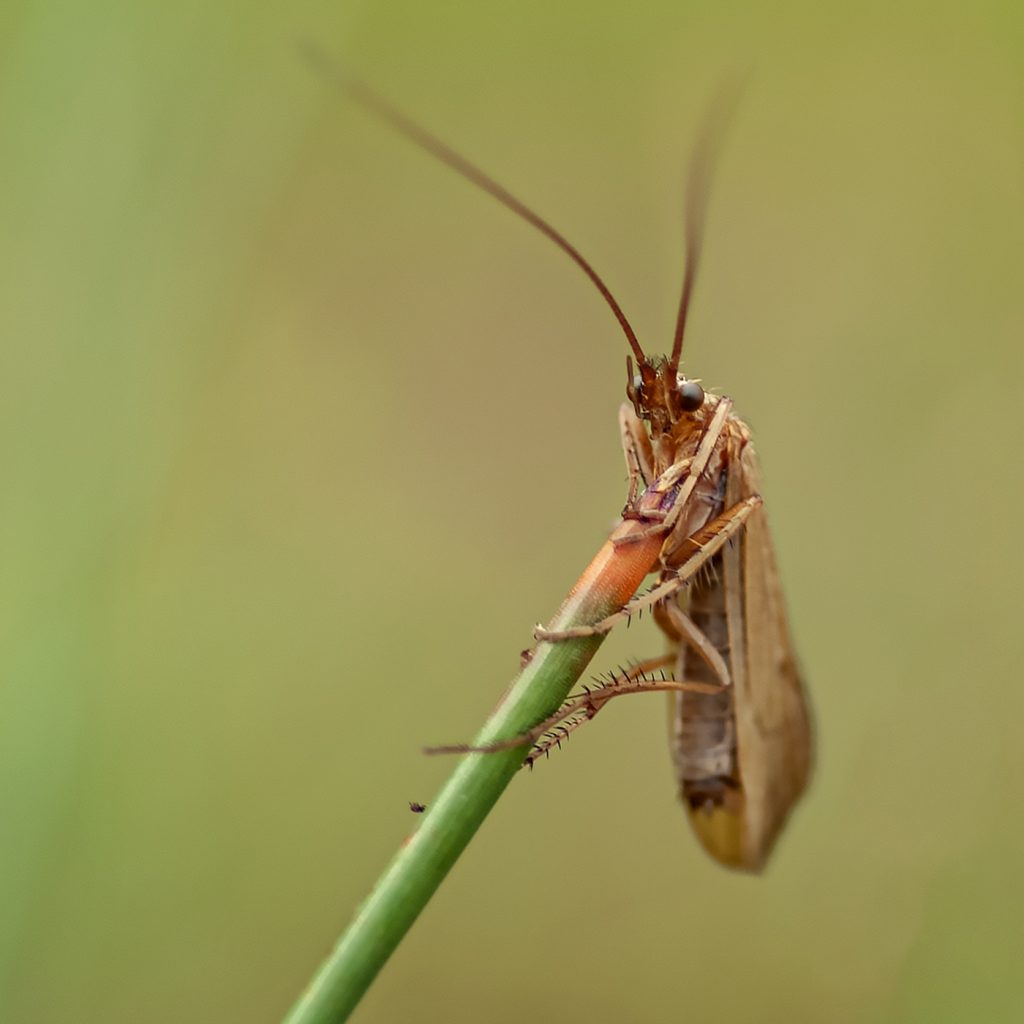
Caddis are important prey for trout and grayling. Some species leave their pupal case and swim towards the surface. Here they swim towards shore to hatch on land or in vegetation. They’re fairly big and you can easily see them almost rowing along the surface. This behaviour obviously makes them highly exposed to trout and grayling, but also very fun to fish, because you can skate and twitch the fly, which often triggers quite aggressive strikes. Skating and twitching is often something we strive to avoid when dry fly fishing, but in this case, it’s exactly the way to fish.

Skating and twitching requires that the fly floats. Nearly all flies will at some point become waterlogged and sink, needing to dry in order to fish properly again. Years ago, Ismo Hyvärinen from Kiruna in Northern Sweden solved this problem in a very practical way. In stead of CDC, deer hair, foam or whatever we often use to create floating flies, Ismo simply carved and shaped a quite precise imitation out of balsa wood. Painted and sealed it makes sure that the fly never, as in never, sinks, no matter how hard you try. Anf if you pull it hard enough to sink it, it’ll pop right back on the surface.
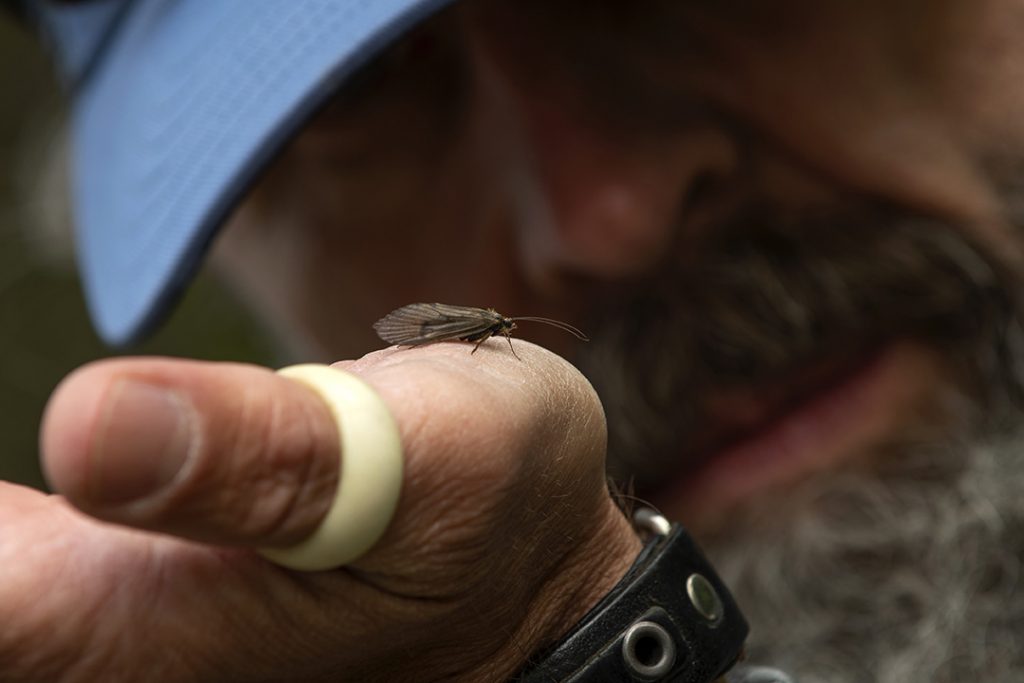
Stafan Larsson aka Vicked Trout is having a close inspection on a newly hatched caddis.
It takes a while to tie, but as well as it floats, it’s durable as well. You will of course lose the odd one to a fish or a tree, but when fishing these hatches, you can fish thicker tippet than you usually would. So even if it’s time consuming, it’s definitely worth trying.
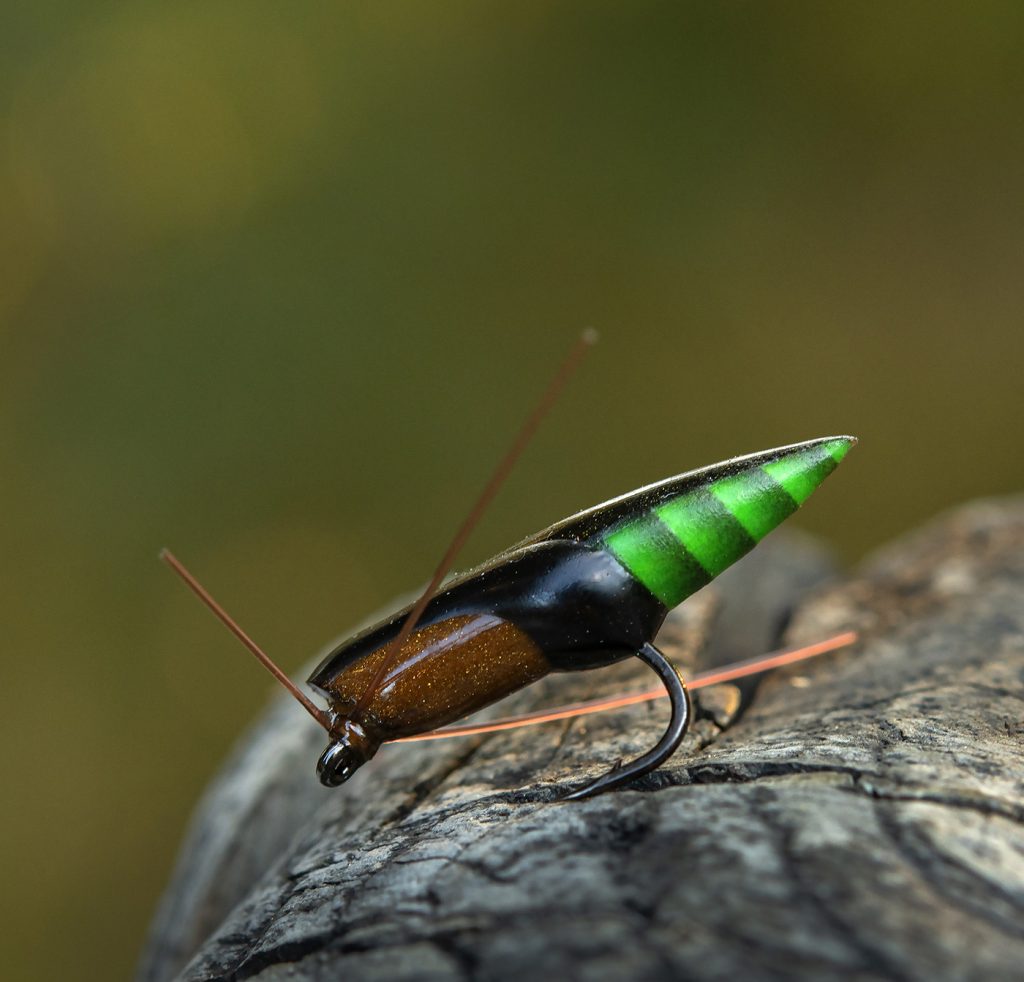
Green Butt Ismo by Kim Mäki, balsawood per perfection.
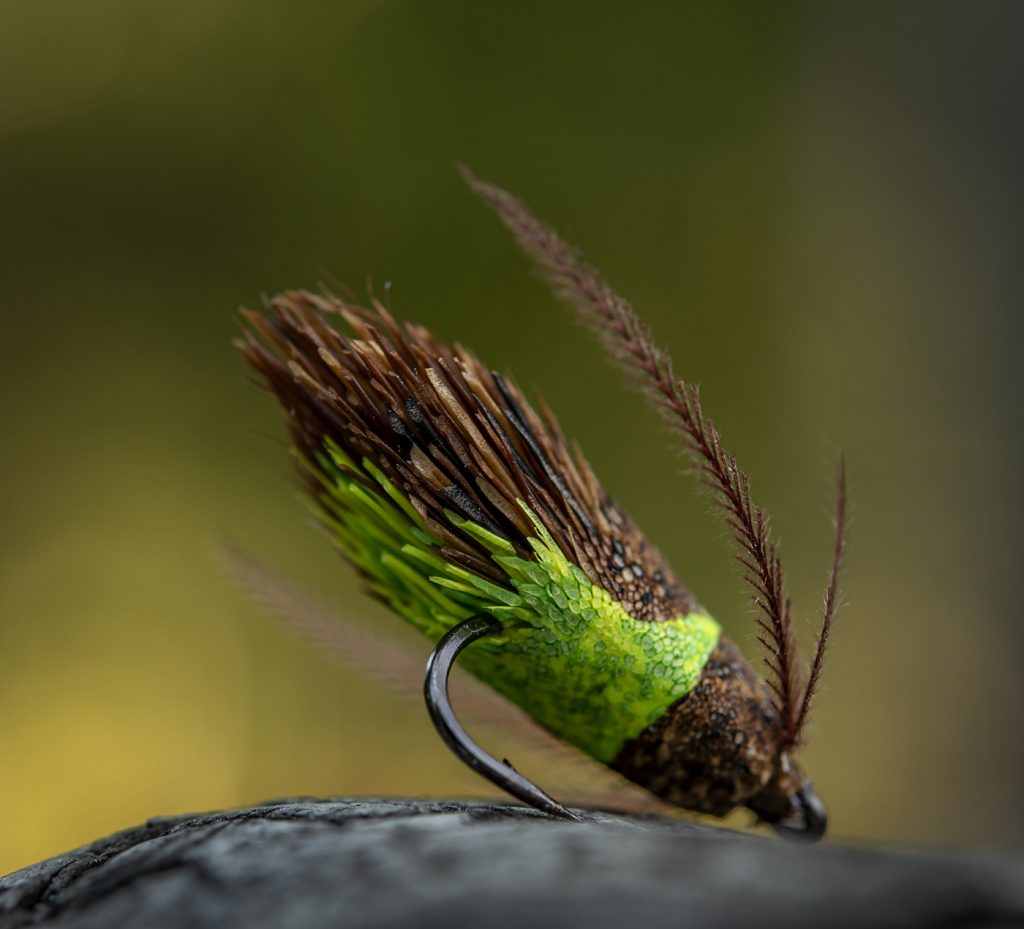
Green Butt Deer Hair Ismo by Kim Mäki.
If you don’t have balsa lying around, there are other options. Kim Mäki from Finland ties an absolutely beautiful deer hair version and uses spun deer hair for the legs, rather than the nylon the original uses. Check out this YouTube Short with Kim Mäki tying the Deer Hair Ismo Pupa. It’s also rather time consuming, especially if you don’t have Kim’s off worldly skills.
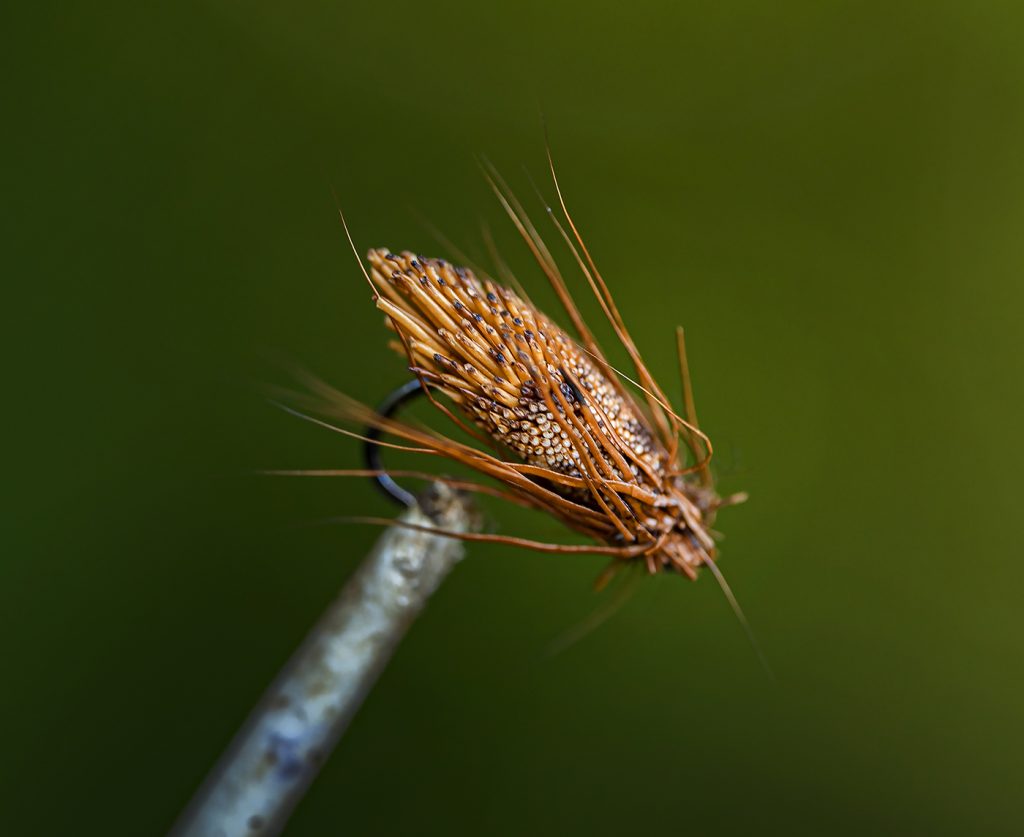
Mäki Pupa by Kim Mäki.
But there’s a final option. An obvious alternative is of course to make the pupa out of foam. This allows the use different colours, because you can layer the foam. This also creates a fly that floats very, very well. You can even melt the foam together in a pair of forceps or pliers and create a nice segmentation in the process, much like the one Håkan Karsnäser shows here:
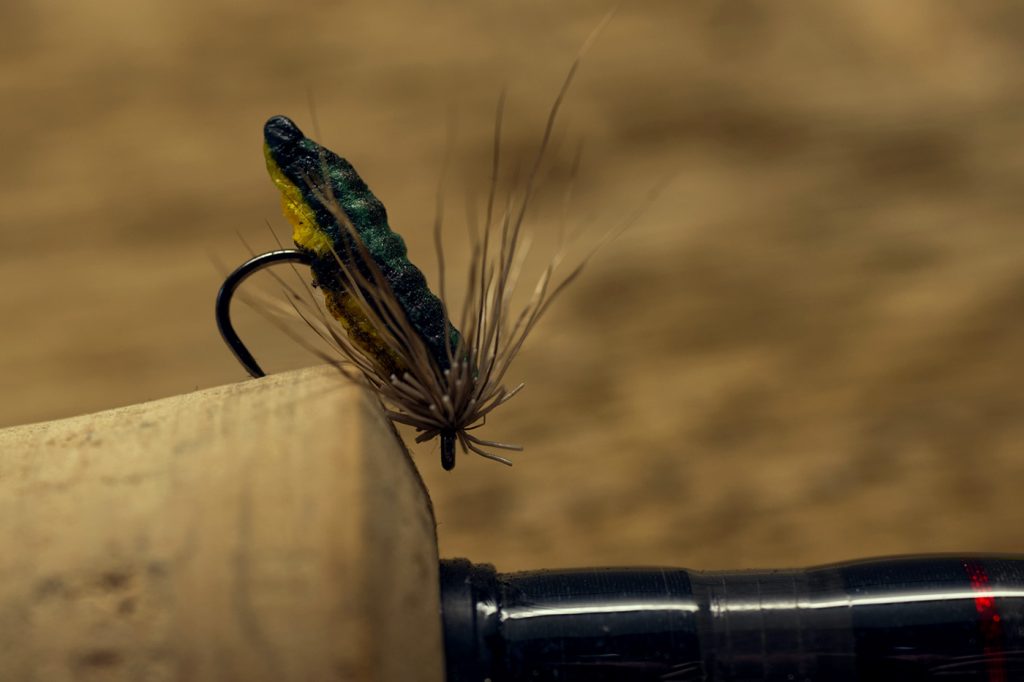
I recently bought a pair of pliers from mayfly.se, made for producing segmentations in foam. Using these you can get a very life like imitation of a floating caddis pupa – and it’s not too time consuming and difficult to tie, once you get the hang of making the abdomen in the pliers.

Photo: Matt Gymon / Freestone River Photography
